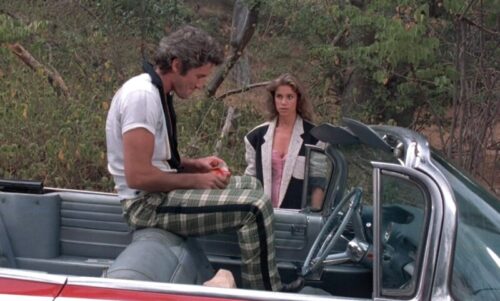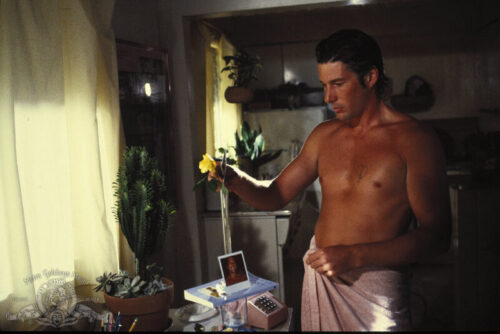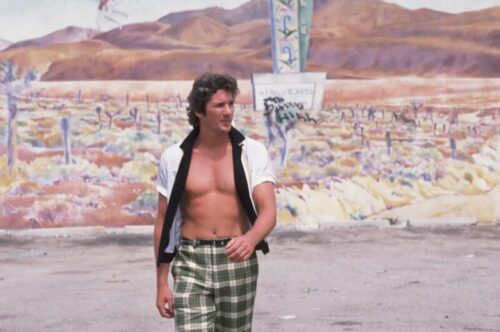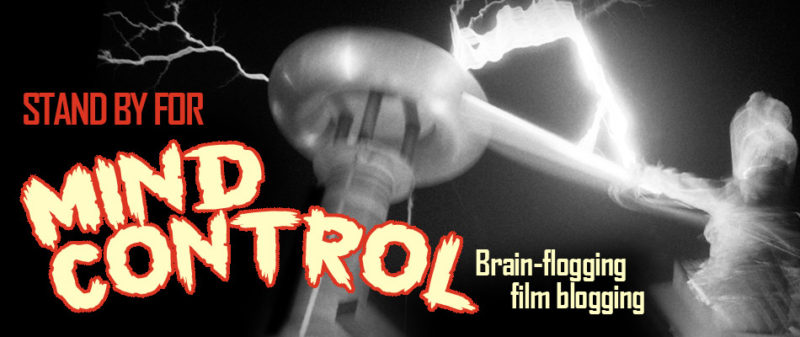One doesn’t expect much from remakes of great films. One tends mainly to wonder: Why? Why in the name of the gods of cinema is this happening? Remake bad films, I always say. Plenty of great ideas made poorly that would benefit from a rethinking. Problem there lies in seeing the great idea when it’s buried by lousy execution. Which then one finds oneself remembering that in art it’s always, to a great extent, not the what but the how. Thus that what we see as great is always the execution. It’s this, then, that inspires remakes. And that’s the whole problem. That movie was great! one says, unconsciously assuming it’s the idea that’s great, and why not remake a great idea?, when in fact it’s how the idea was executed that does the trick, and are you really going to pull that off again? Is lightning going to strike twice? Not likely. Not unless you come up with a new story and a new way to tell it. Are you? No. You’re not.

Unless you do. Director Jim McBride, by the early ’80s best known for sly faux-doc David Holzman’s Diary (’67), and least for little seen (oh, yes, I have this very moment added it to my list (OOP DVDs going for $124, hm, looks like I’m stuck with youtube)) post-apocalypse flick Glen and Randa (’71), teamed up with the star of the former, L. M. Kit Carson, to write an updated, Los Angeles set remake of Godard’s famed ’60 debut, Breathless. Carson would follow this up a year later by co-writing, with Sam Shepard, Paris, Texas for Wim Wenders. McBride would go on to direct three more films of decreasing notability.
But Breathless, their remake, is kinda great. I hesitate to say it’s better than the original, given the original’s influence, which is mighty indeed. Based on a story by already-very-famous François Truffaut, the not-yet-at-all-famous Godard made up dialogue on the fly, shot it on 35mm still camera negatives strung together to be run through a movie camera, conceived of it, stylistically, as a documentary, packed it with references to American noirs, and thus turned out the most self-consciously cool French New Wave flick of them all, one that influenced countless filmmakers since (including Richard Linklater, whose new movie, Nouvelle Vague (opening soon), tells the story of its making (in b&w, with old timey 4:3 aspect ratio, as one does)). As someone who loathes all of Godard’s subsequent films (sorry, the guy’s insufferable), Beathless has always been his only film I enjoy. So okay. The remake isn’t “better.” It can’t be. Few movies have had the influence of Godard’s. Few movies have so turned on its head the notion of what a movie can be. Let’s give him that.
It’s just, purely on the basis of entertainment and enjoyment, I think, maybe, possibly, the ’83 version is, in that sense, if you’ll forgive the heresy of it, better. Maybe? Maybe. I promise to rewatch Godard’s original shortly, to test this theory (I last saw it a decade ago, in a theater, on 35mm. So there).

McBride switches up nationalities and countries in his version. If the original was oh so outrageously French, his would be purely and insanely American. Richard Gere plays Jesse, the small time crook who, uh-oh, kills a cop, and goes, as nonchalantly as his French counterpart, on the run, from Vegas to L.A., where there’s a woman he’s mad for, a French exchange student, Monica (Valérie Kaprisky), who’s both charmed and repelled by his nutty attitude. As are we, the audience. Gere plays Jesse as a comic book character. Being the pure American he is, he’s obsessed by comics, the Silver Surfer in particular, leading to a fantastic scene between Jesse and a teenager who thinks the Silver Surfer sucks, a scene the ridiculously blatant subtext of which has no business working as well as it does, but it does, because it’s so comically blatant.
The whole movie is absurdly over-the-top. The colors, the characters, the ’50s rockabilly tunes (and score by Jack Nitzsche), the framing of shots. It looks great, its excessively violent colors the perfect contrast to the original’s grainy, doc-like black and white. Where the French are as cool as natural b&w lighting allows, the Americans are as loud as a night in Vegas, whether actually in Vegas, or on the street trying on a new pair of plaid trousers. The movie is meant to evoke comics visually, as well. Many exterior scenes are shot against backdrops of street murals, lending them a look akin to comics panels. The neon colors, the rear-projection car rides, Gere’s outfits–they all add to the comic book vibe, to the American vibe. And that’s really why this remake works. Whether or not one thinks it’s better than the original, it exists for a reason. It doesn’t set out to simply redo the original. It takes the Frenchness of the original as its starting point and says, okay, but what if this were truly an American movie, not just set in America, what if it communicated the feel of America, its vibe, as much as the original communicates the vibe of the French New Wave? One scene is set in a movie theater, behind the screen, in which Gun Crazy is being projected, a classic lovers-on-the-lam flick which no doubt inspired Godard (as well as Bonnie & Clyde (which itself makes numerous references to its other inspiration, Breathless)).
I never saw the ’83 Breathless back in the day. Putting it on some months ago, I didn’t expect to think much of it. And then it grabbed me from the start. At times I’d find myself thinking, Well, yes, this is fun, in its odd way, but isn’t it all a bit ridiculous? Isn’t Gere’s character too much to believe? Isn’t this…just…a bit too…or not enough…or…or…
And then I’d be lost again in this loony adventure not caring a bit about any of that. Just having a blast letting it wash over me. A few months later I watched it again and liked it even more. Sometimes a remake proves itself worth having been made. McBride’s Breathless is one of them. Check it out.

